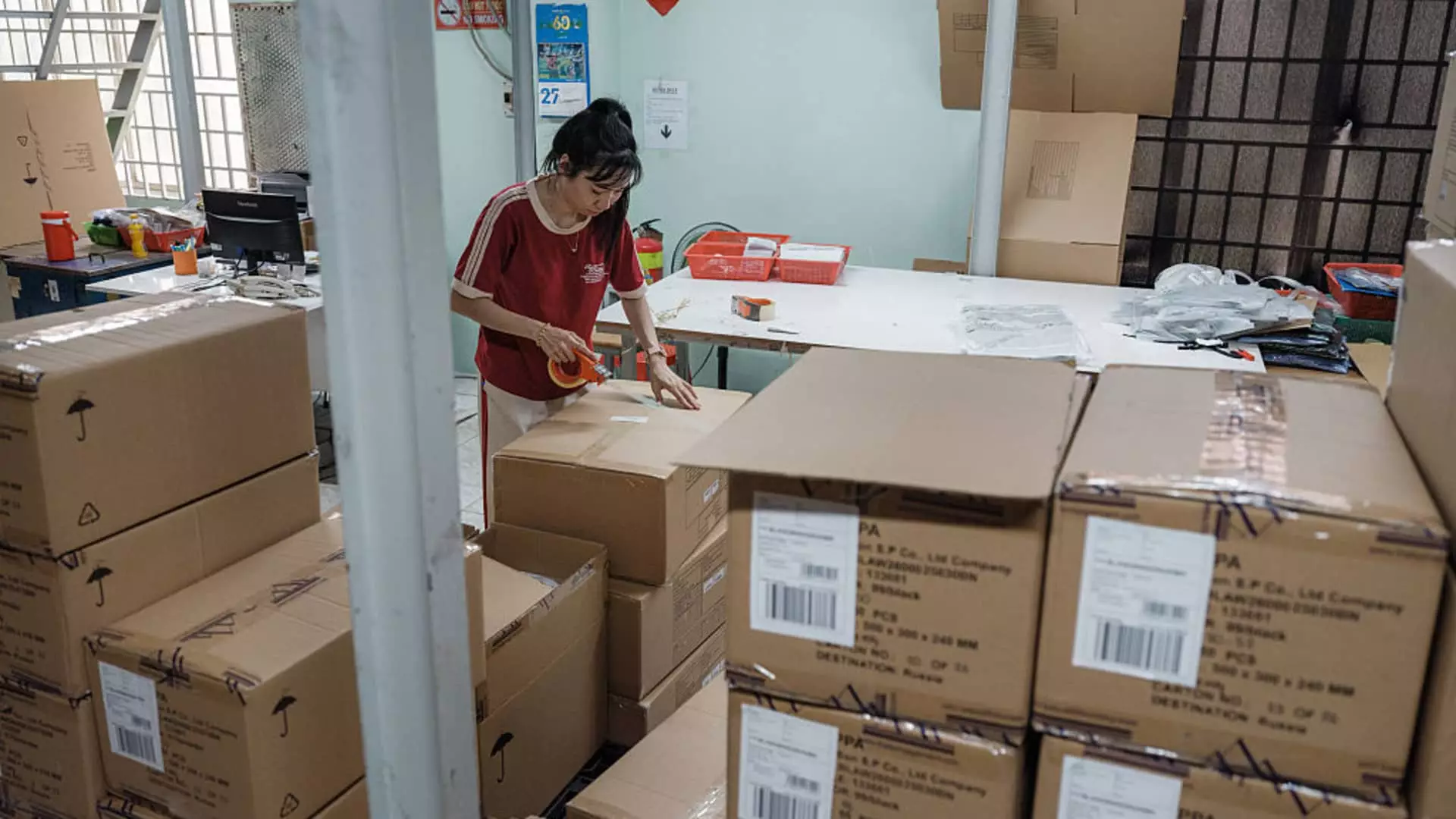The recent announcement regarding potential reductions in Vietnam tariffs may have temporarily eased the overwhelming strain on the retail sector, but beneath this veneer of optimism lies a deeper, more troubling reality. The so-called “compromise” between the U.S. government and Vietnamese trade practices does little to assuage the fundamental tensions plaguing the global supply chain. Instead, it exposes the fragility of the current economic framework, which is driven by unpredictable geopolitical maneuvers rather than stable, long-term strategic planning. Retailers, especially those in apparel and footwear, find themselves caught in a perpetual cycle of uncertainty, with each policy shift threatening their operational viability.
The administration’s approach, often characterized by the doctrine of brinkmanship, creates an environment where the industry’s future is unduly tethered to the whims of tariff negotiations. While a 20% tariff is arguably better than the proposed 46%, it remains an unwelcome burden that directly impacts profitability and consumer prices. The industry’s hope for stability hinges less on political rhetoric and more on tangible, consistent policies—something that seems increasingly elusive in today’s volatile political climate. The absence of a clear timeline for implementation further accentuates this instability, leaving industry players in an almost perpetual state of limbo, adjusting strategies without certainty.
Strategic Retreats or Reckless Gambles? Industry Response to Trade Tensions
Over the past decade, U.S. apparel and footwear companies have made significant efforts to diversify their manufacturing base away from China. Vietnam has emerged as a crucial alternative, offering comparable quality and cost-efficiency. The perils of this strategy become starkly apparent amidst ongoing trade threats; any escalation of tariffs could undo years of strategic realignment aimed at mitigating geopolitical risks. Many industry leaders now face a stark choice—absorb increased costs, pass them onto consumers, or seek further diversification. Each option is fraught with peril.
This constant juggling act reveals a fundamental flaw in the current approach to trade policy: reliance on short-term political fixes rather than embracing a comprehensive, forward-looking industrial strategy. The industry’s shift to Southeast Asia was driven by necessity, and policies that threaten to re-impose high tariffs threaten to unravel these delicate supply chains. The risks are not limited to logistics; they extend into consumer sentiment and purchasing power, which are the true barometers of retail health. When tariffs threaten to eclipse 50%, the entire premise of cost-efficient, globalized manufacturing teeters on the edge of collapse, highlighting the dangerous disconnect between political agendas and economic realities.
The Hidden Cost: Consumer Impact in a Prolonged Trade War
The speculation about tariff hikes isn’t just relevant to industry insiders—it directly influences American consumers. Price models demonstrate that even a modest 20% tariff could translate into an additional $7 to $10 on every pair of shoes or every garment. These increases may seem trivial in isolation, but cumulatively they erode consumer purchasing power, especially in a period marked by economic uncertainty and inflationary pressures. Retailers are already contemplating price hikes, not just as a veneer of profitability but as a necessity to remain afloat.
The implications extend beyond mere sticker shock. When consumers are forced to fork over more for everyday goods, discretionary spending diminishes. This decline in consumer spending acts as a slow-motion economic brake, stifling growth and risking a broader downturn. Industry executives like Paul Cosaro are painfully aware that these tariffs are less about trade policy and more about their real-world consequences—less money in consumers’ pockets means decreased sales, layoffs, and a sullen economic climate that favors neither optimism nor recovery.
The fragile balancing act retailers attempt—offsetting costs through supplier negotiations and slim profit margins—is ultimately met with limited success. Price hikes, even if initially absorbed by companies, tend to cascade to consumers. In a climate where consumer confidence is already strained, such increases threaten to deepen the divide between economic policy and everyday life. What’s most troubling is how policymakers often dismiss these real-world impacts in pursuit of tactical political wins, ignoring the human and economic toll of their gambles.
The Myopia of Short-Term Wins and the Need for a Nuanced Approach
The obsession with immediate political wins over long-term economic stability is perhaps the greatest flaw of current trade strategies. Celebrating small victories like moderate tariff reductions or postponements obscures the underlying truth: the global economy cannot thrive under the constant threat of escalation. The retail sector’s plight serves as a stark example of this myopia. A focus on rapid political maneuvering rather than sustainable policy development risks creating a fragile, reactionary economic environment prone to shocks.
A center-wing liberal approach advocates for pragmatic, balanced policies that prioritize economic resilience, fair trade, and consumer protection. Instead of zeroing in on punitive tariffs and brinkmanship, policymakers should foster dialogue that recognizes the complexities of global supply chains, labor rights, and environmental standards. Such a stance does not suggest uncritical acceptance of free trade but champions a nuanced, strategic approach that balances competitive fairness, economic security, and social responsibility.
The urgency now is to break free from the cycle of punitive tariffs and unpredictable trade wars. Industry leaders and policymakers alike must embrace a vision where cooperation and strategic diversification take precedence over short-term political gains. Only then can the retail industry regain stability and consumers regain confidence in their own economy, rather than being hostage to the relentless whims of a turbulent trade strategy.

